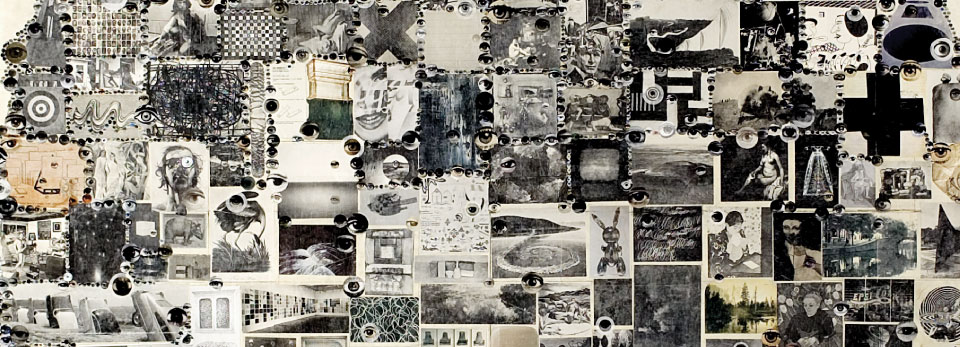

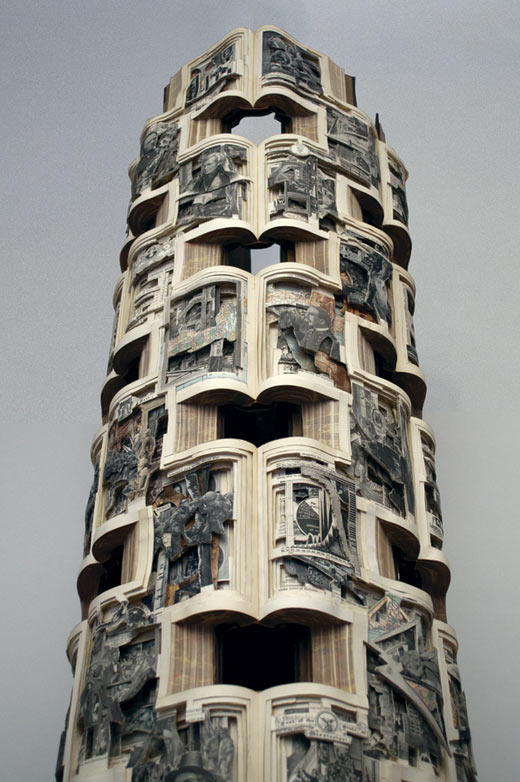
The Halsey Institute of Contemporary Art at the College of Charleston School of the Arts recently organized a major group exhibition of new works by five mixed media artists from around the world who sculpt, scrape, bend and carve to create astonishing compositions using books. On view through July 6th, the exhibition features work from Doug Beube, Long-Bin Chen, Brian Dettmer, Guy Laramee, and Frecesca Pastine.
READ THE FULL STORY [+]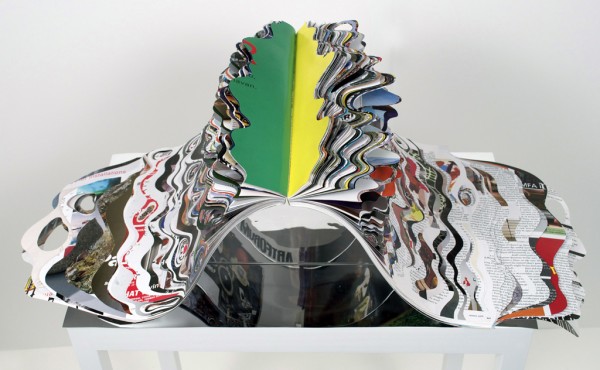
There is no doubt that “the relevance of physical books in our culture is diminishing” according to curator Karen Ann Meyers. Rebound, presented by the College of Charleston‘s Halsey Institute of Contemporary Art, shows five artists who use books to create sculpture. Books provide a mass of free material for these artists. Encyclopedia sets were once functional objects from a different time and culture. These discarded books are given new life.
READ THE FULL STORY [+]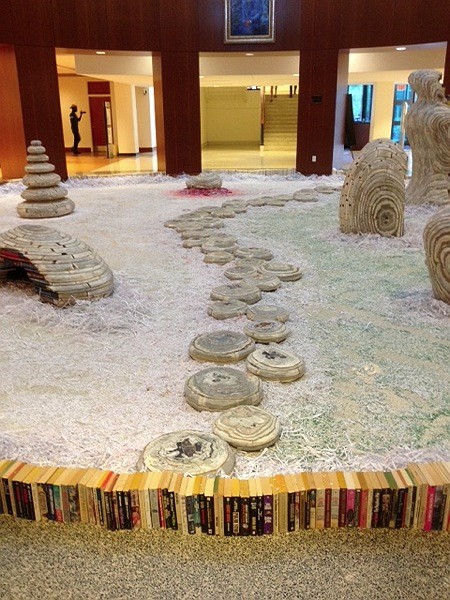
Books and art are bedfellows in several art shows this year. The amazing Rebound: Dissections and Excavations in Book Art, can be seen at the Halsey Institute (see my posting about that from several days ago), but do not miss a portion of this exhibition at the College of Charleston Addlestone Library.
READ THE FULL STORY [+]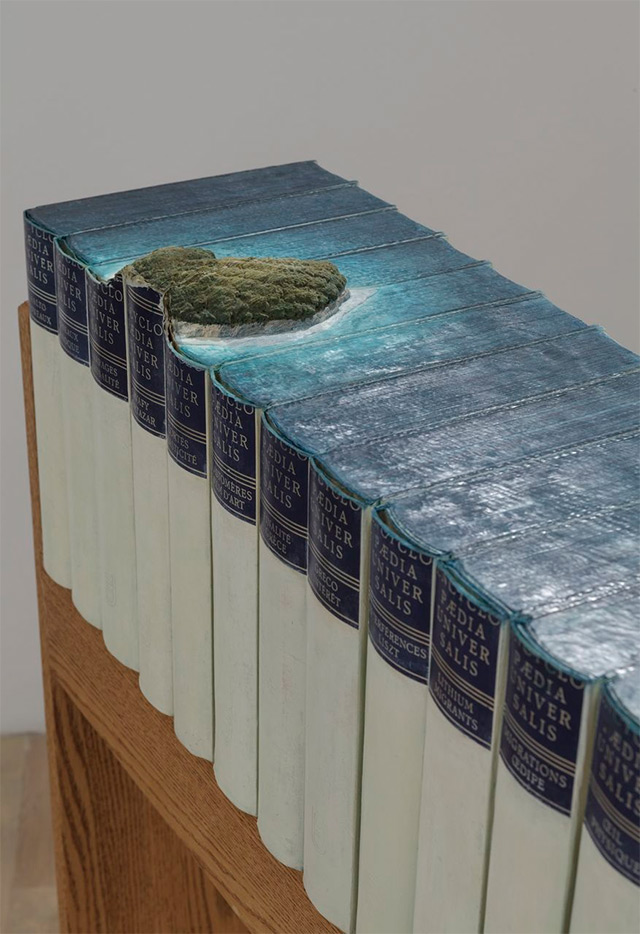
In a Brooklyn basement, blonde wood shelves stuffed with leather-bound tomes line the walls. Doug Beube, a mixed-media artist, has a home studio full of books, but his basement is not your typical library. In the center of the room lie Beube’s carpentry tools — a table saw, a dremel rotary tool, a belt sander. Beube motions to the books on the walls, “These,” he said, “are up next for the guillotine.” A paper guillotine — a large paper cutter with a long, knife-like handle at one end — is a normal tool for those working with paper. Beube would know. He apprenticed with a professional book binder while getting his masters in photography in Rochester, N.Y. It’s an appropriately dramatic object for transforming a book into a work of sculptural art.“Rebound: Dissections and Excavations in Book Art” opened May 23 at The Halsey Institute of Contemporary Art, in conjunction with Spoleto Festival USA. Curated by Karen Ann Myers, “Rebound” features Beube’s work alongside other artists who use books as their raw material — Long-Bin Chen, Brian Dettmer, Guy Laramee and Francesca Pastine.
READ THE FULL STORY [+]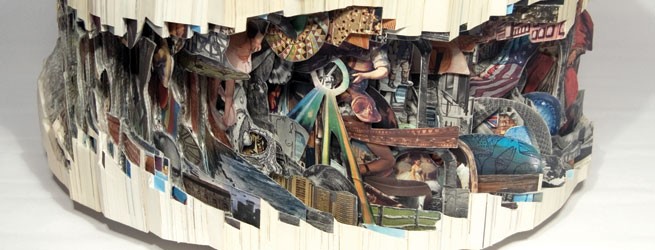
Karen Ann Myers is expecting people to freak out at her Halsey curatorial debut. She’s organized a show that challenges the most sacred possessions in human history, the Bibles and the Great Gatsbys and the Twilights of the world: books.
Some books can be written off as carriers of information, while others are simply beach-read trash. But many are actually objects of desire and value — that’s why whenever Myers moves somewhere new, she packs and unpacks her two huge bookshelves, even if she has no problem throwing away plenty of other belongings.
“Books are really sacred,” Myers says, which is why the works featured in Rebound: Dissections and Excavations in Book Artmay be so jolting to its audience. “[Viewers] will not be able to see the work as an artwork. They are only going to be able to see mutilated text. But books are conversations, books are living material. That’s why people value them and why they’re so disturbed by their destruction. This understanding of the importance of the book is so remarkably ingrained in human psychology.”
READ THE FULL STORY [+]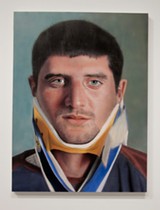
Walk into the this year’s Young Contemporaries exhibit at the Halsey Institute of Contemporary Art and you’ll find plenty of faces looking back at you: a grinning man in front of rows of pocket knives, a pair of Baroque-era young ladies with tattoos and piercings, and a large, green tree with a pick comb sticking out of its branches. Each of these were created by College of Charleston students who made the cut for the annual juried student exhibition this year.
The exhibit’s emphasis on portraiture is just one of the things that makes it different from last year’s show, says Halsey assistant director Karen Ann Myers. Viewers might also notice a shift toward more figurative work compared to last year’s abstracts. But it’s all part of the process, designed to showcase the best artwork coming out of the college, as chosen by a prominent outside artist.
“It’s like all things in the art world, it’s very subjective,” Myers says. “So the exhibit takes on a different look and different feel every year because it takes on the aesthetics or personal tastes of the person we invite to judge the show.”
READ THE FULL STORY [+]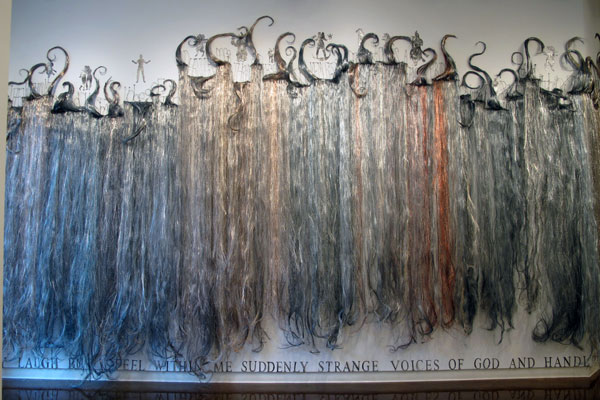
It can be said that art can serve as a universal language. Visual artist Lesley Dill applies literal meaning to art as a communicative agent by incorporating various forms of language into her multi-faceted work. Currently on view at the Halsey Institute of Contemporary Art in Charleston, South Carolina, Poetic Visions: From Shimmer to Sister Gertrude Morgan reveals a fusion of the visual with the verbal through an amalgamation of sculpture, fashion, installation, painting, and drawing.
The exhibition fills the gallery space of the Halsey, with elements of the two featured bodies of work covering the walls from floor to ceiling, while also sweeping through the center of the gallery. It’s a myriad of visual and textual imagery, matched by a breadth of references and influences. Yet, there exists an underlying unification through the words, figures, and symbolic imagery: it is Lesley Dill’s way of conveying her desire to render transcendental experience into form.
READ THE FULL STORY [+]It’s not often that an art installation so perfectly embraces the written word. But Lesley Dill’s “Poetic Visions: From Shimmer to Sister Gertrude Morgan” exhibit not only embraces language but demands the words come alive. To go with the exhibit, there is a “Tongues Aflame” poetry series designed to be a response to Dill’s fusion of language, costume and image.For four dates in February, poets will read some of their work standing in the midst of Dill’s creations. The readings are co-sponsored by the Halsey Institute of Contemporary Art, the College of Charleston Department of English, Poetry Society of South Carolina and the literary magazine Crazyhorse.
READ THE FULL STORY [+]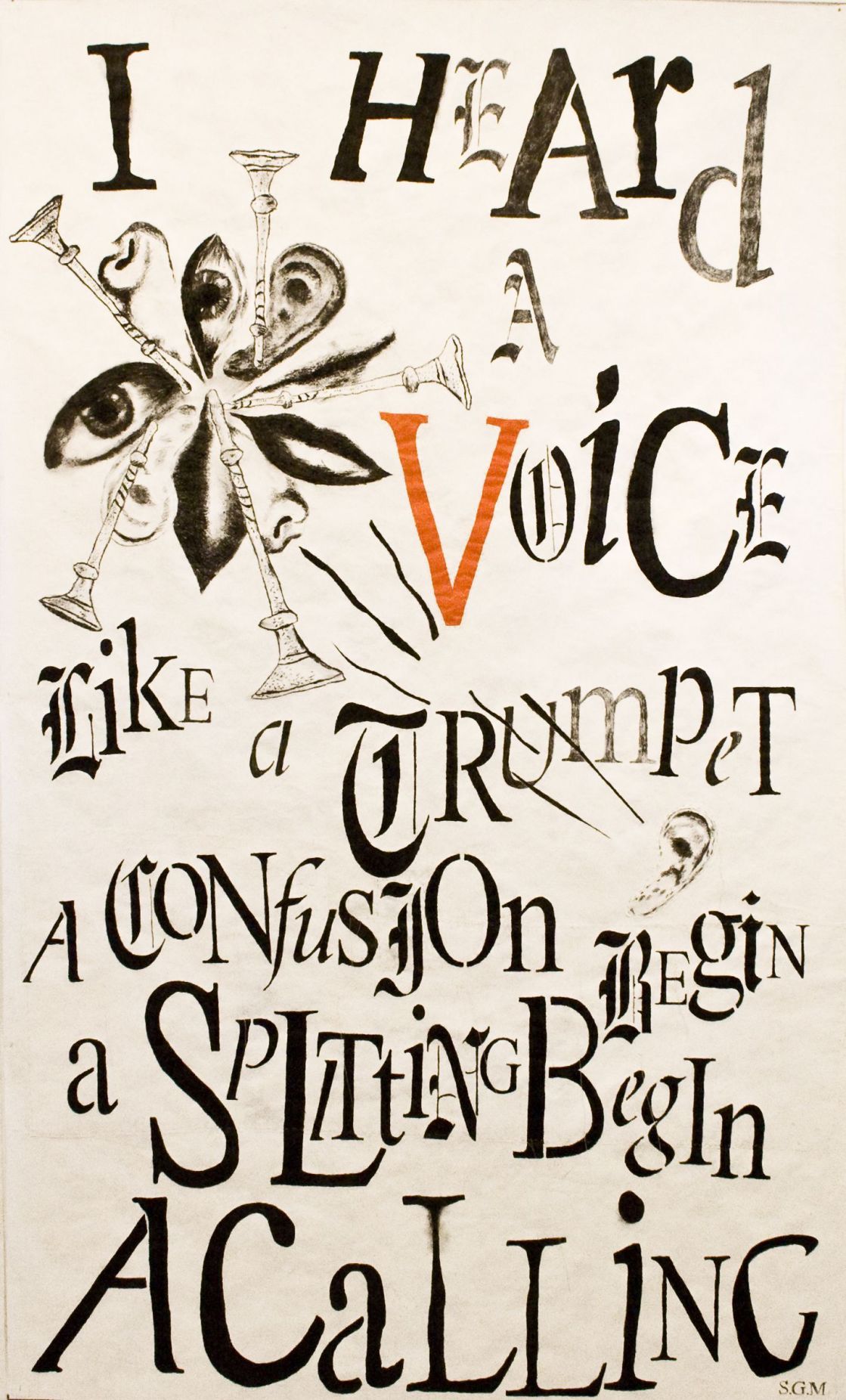
Sometimes visual art is simply meant to dazzle, shock or fascinate. Sometimes its aesthetic is superficial: it’s the surface of the work, what’s clearly visible, that communicates a fundamental idea of beauty or brutality or intricacy. Art for art’s sake.
But sometimes, art is about ideas, and what’s visible is only the outward manifestation of something larger or more significant. This is art as symbol.
Some of the best visual art, though, is a combination of the physical, intellectual and emotional. It works aesthetically while simultaneously conveying ideas of interest and resonating within us for reasons that are not always immediately clear.
For Brooklyn-based artist Lesley Dill, it is this third category that fascinates her most and drives her to create large-scale installations that mix imagery and text.
READ THE FULL STORY [+]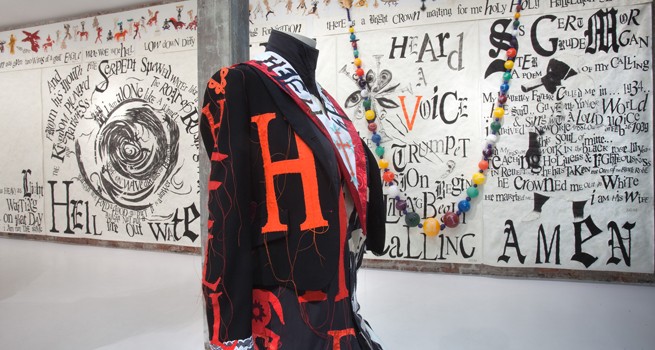
I’ve been poring over the exhibit catalog for Lesley Dill’s Poetic Visions: From Shimmer to Sister Gertrude Morgan for days. The pages are filled with images of richly colored, dramatic mixed-media creations. A figure in a huge white wedding dress with a train that rises to meet the ceiling, its face shrouded in layers and layers of tulle. Colorful paper skeletons riding skeletal horses across a wall. Ambiguous, metallic human forms, some looking to the sky, some seeming to stare right back at the viewer. And most importantly, words. There are words everywhere, on the wedding dress, on the walls, in the skeletons’ hands.
The mingling of image and language, specifically the language of poetry, is Lesley Dill’s hallmark. Her language-saturated work resides in such hallowed halls as those of the Metropolitan Museum of Art, the Museum of Modern Art, and the Whitney Museum of American Art. For a long time she drew only from the poems of Emily Dickinson for her artwork, but she now uses the words of other writers too. For this exhibit, it’s the New Orleans missionary and visionary Sister Gertrude Morgan who takes center stage.
READ THE FULL STORY [+]